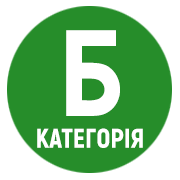Features of the ontogenetic structure of Helichrysum arenarium L. (Asteraceae) coenopopulations in the different phytocoenosis under the conditions of the Shostka district, Sumy region (Ukraine)
Abstract
The paper contains the characteristics of Helichrysum arenarium L. plants of various ontogenic stages and their percentage in six cenopopulations. On the ground of obtained results, conclusions are made regarding considering the ontogenic structure of H. arenarium cenopopulations in the conditions of Shostka geobotanical district, Sumy region (Ukraine). Complex assessment of the ontogenic structure of populations using a specialized software and conventional methodologies, showed that the majority of populations are represented by plants of 4–8 ontogenic stages. Most constant are the generative and old individuals present in all investigated cenopopulations. Based on the ratio of the age index and the efficiency index (values of Δ / ω), it was determined that majority cenopopulations are ageing. The value of the age index (by the method of Kovalenko I. M. [9]) is bigger than 1 in all investigated cenopopulations, suggesting the prevalence of degradation processes. According to the classification of T. O. Rabotnov, all investigated populations belong to the category of “normal”. All main characteristics of populations indicate their potential for sustainable existence in the study region. However, their viability appears to be different, with the most evident imitations being faced by the populations under the pine forest canopy (populations are incomplete as to the presence of various ontogenetic states). In contrast the populations growing in Pineto (sylvestris)–Aceretum (platanoiditis) helichryosum (arenarium) and Helichrysetum (arenarium) phleosum (pratense), аs well as Achilletum (millefolium) helichryosum (arenarium) is community distinguished by the most complete ontogenic structure. As a result of radical changes in natural ecosystems, there is a decrease in the populations of many species, which prompts us to find directions and ways of regulating the mechanisms of development of natural phytocenoses. As a promising scientific direction, the application of the morphometric and vital analyzes to the investigated cenopopulations for evaluation of sustainability parameters of the H. arenarium individuals in the studied area.
References
2. Zaugol'nova, L. B. (1977). Analiz cenopopuljacij kak metod izuchenija antropogennyh vozdejstvij na fitocenoz [Analysis of coenopopulations as a method of studying anthropogenic effects on phytocenosis]. Botanicheskij zhurnal, 12, 1767–1779 (in Russian).
3. Zlobin, Ju. A. (1989). Principy i metody izuchenija cenoticheskih populjacij rastenij [Principles and methods of the coenotic populations studying]. KZU, Kazan' (in Russian).
4. Zlobin, Ju. A. (1996). Koncepcija kontinuuma i gradientnyj analiz na urovne osobej i populjacij rastenij [The concept of continuum and gradient analysis at the level of individuals and populations of plants]. Zhurnal obshhej biologii, 6, 684−694 (in Russian).
5. Zlobin, Ju. A. (1989). Teorija i praktika ocenki vitalitetnogo sostava cenopopuljacij rastenij [Theory and practice of assessing the vitality composition of plant coenopopulations]. Botanicheskij zhurnal, 6, 769–780 (in Russian).
6. Skljar, V. G. (2013). Vikova struktura dribnogo pidrostu sosny zvychajnoi' v lisah Novgorod-Siverskogo Polissja. [Age structure of small undergrowth of pine in the forests of of Novgorod-Sivers’k Polissia]. Agrarnyj visnyk Prychornomor’ja. Sil's'kogospodars'ki nauky, 66, 83–88 (in Ukrainian).
7. Zlobin, Ju. A. (2013). Populjacii redkih vidov rastenij: teoreticheskie osnovy i metodika izuchenija [Populations of rare plant species: theoretical foundations and methods of study]. Universitetskaja kniga, Sumy (in Russian).
8. Zlobin, Ju. A. (2009). Populjacionnaja jekologija rastenij: sovremennoe sostojanie, tochki rosta [Population ecology of plants: current status, growth points]. Universitetskaja kniga, Sumy (in Russian).
9. Kovalenko, I. M. (2005). Struktura populjacij dominantiv trav’jano-chagarnychkovogo jarusu v lisovyh fitocenozah Desnjans'ko−Staroguts'kogo nacional'nogo pryrodnogo parku. Ontogenetychna struktura. [Population structure of grassland shrub dominant populations . of woody phytocoenosis of the Desniansko-Starogutsky National Nature Park. Ontogenetic struc-ture]. Ukrai'ns'kyj botanichnyj zhurnal, 62, 707–714 (in Ukrainian).
10. Skljar, V. G. (2012). Osoblyvosti ontogenetychnogo rozvytku sosny zvychajnoi' (Pinus sylvestris) v riznyh lisovyh ekosystemah Novgorod-Sivers'kogo Polissja. [The peculiarities of the ontogenetic development of the scotch pine (Pinus syl-vestris) in various forest ecosystems of Novgorod-Sivers’k Polissia]. Ekosystemy, yh optymyzacyja i ohrana, 25, 129–135 (in Ukrainian).
11. Skljar, V. G. (2012). Ontogenetychna struktura populjacij cenozoutvorjujuchyh derevnyh porid v mishanyh ta shyro-kolystjanyh lisah Novgorod-Sivers'kogo Polissja. [Ontogenetic structure population of tree species in mixed and deciduous forests of the Novgorod -Sivers'k Polissia]. Uchenыe zapysky Tavrycheskogo nacyonal'nogo un-ta ym. V.Y. Vernadskogo (Ser-yja «Byologyja, hymyja»), 4, 179–185 (in Ukrainian).
12. Ivashin, D. S. (2011). Lekarstvennye rastenija Ukrainy [Medicinal plants of Ukraine]. Urozhaj, Kiev (in Russian).
13. Kurkina, A. V. (2011). Issledovanie komponentnogo sostava cvetkov Helichrysum arenarium (L. ) Moench [Compo-nent composition research of the of Helichrysum arenarium (L.) Moench flowers]. Himija rastitel'nogo syr'ja, 2, 113−116 (in Russian).
14. Iljushechkina, N. V. (2009). Harakteristika cenopopuljacij Helichrysum arenarium Moench. na territorii gosudar-stvennogo prirodnogo zapovednika «Prisurskij» [Characteristic of Helichrysum arenarium Moench coenopopulations in the territory of the “Prisursky” state nature reserve]. Vestnik OGU, 10, 92−95 (in Russian).
15. Turubara, O. V. (2010). Likars'ki roslyny Livoberezhnogo Polissja: stan resursiv, perspektyvy vykorystannja ta oho-rona. [Medicinal herbs of Leftbank Polissya: the state of resources, prospects of use and protection]. Dysertacija na zdobuttja naukovogo stupenja kandydata biologichnyh nauk za special'nistju 03.00.05 – botanika. Nacional'nyj botanichnyj sad im. M. M.Gryshka NAN Ukrai'ny, Kyi'v (in Ukrainian).
16. Zhyvotovskyj, L. A. (2001). Ontogenetycheskye sostojanyja, эffektyvnaja plotnost' y klassyfykacyja populjacyj rastenyj [Ontogenetic states, effective density and classification of plant populations]. Ekologyja, 1, 3–7 (in Russian).
17. Zhukova, L. A. (2000). Ontogenetycheskyj atlas lekarstvennyyh rastenyj [Ontogenetic Atlas of Medicinal Plants]. Uchebnoe posobye. Mar. gos. un-t, Joshkar-Ola (in Russian).

 ISSN
ISSN  ISSN
ISSN 


